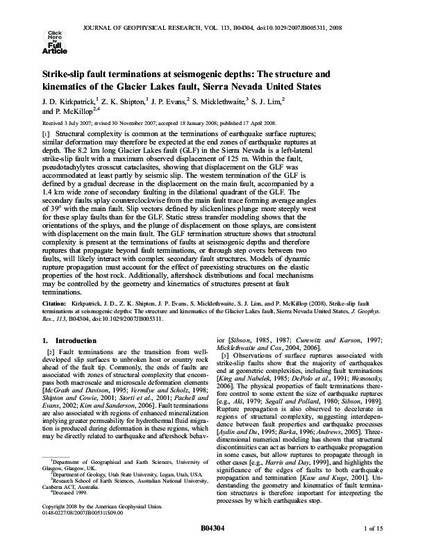
[1] Structural complexity is common at the terminations of earthquake surface ruptures; similar deformation may therefore be expected at the end zones of earthquake ruptures at depth. The 8.2 km long Glacier Lakes fault (GLF) in the Sierra Nevada is a left-lateral strike-slip fault with a maximum observed displacement of 125 m. Within the fault, pseudotachylytes crosscut cataclasites, showing that displacement on the GLF was accommodated at least partly by seismic slip. The western termination of the GLF is defined by a gradual decrease in the displacement on the main fault, accompanied by a 1.4 km wide zone of secondary faulting in the dilational quadrant of the GLF. The secondary faults splay counterclockwise from the main fault trace forming average angles of 39° with the main fault. Slip vectors defined by slickenlines plunge more steeply west for these splay faults than for the GLF. Static stress transfer modeling shows that the orientations of the splays, and the plunge of displacement on those splays, are consistent with displacement on the main fault. The GLF termination structure shows that structural complexity is present at the terminations of faults at seismogenic depths and therefore ruptures that propagate beyond fault terminations, or through step overs between two faults, will likely interact with complex secondary fault structures. Models of dynamic rupture propagation must account for the effect of preexisting structures on the elastic properties of the host rock. Additionally, aftershock distributions and focal mechanisms may be controlled by the geometry and kinematics of structures present at fault terminations.

Originally published by American Geophysical Union. Publisher's fulltext and PDF available through Journal Geophysical Research Solid Earth.